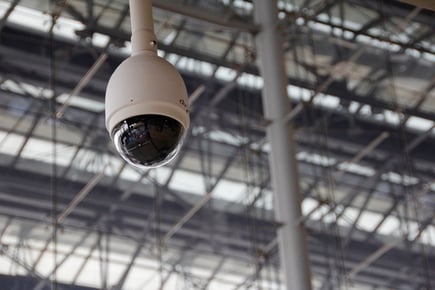In the ever-increasing reach of today’s video security and surveillance systems, many security professionals are finding that the quality, bandwidth, and distance needed to perform even the most basic surveillance is beyond the reach of coaxial and UTP cabling. Even though IP-based video security systems are gaining popularity, they face a serious distance limitation of 100 meters (328ft) or less over UTP cabling infrastructure. This poses an insurmountable hurdle when trying to monitor the many outreach locations of a typical surveillance installation.
While fairing slightly better in copper distance limitations, most analog-based CCTV systems prove effective and economical only if the coaxial cabling runs utilizing an RG59/U cables are held to less than 750ft (228m). Utilizing RG59/U coax beyond that distance, however, poses several problems, some of which are not immediately obvious. For instance, let’s say your monitor is located 1,000ft (304m) from the camera. In that scenario, without any active signal conditioning, approximately 37 percent of the high-frequency information will be lost in transmission, providing a seriously degraded image. In fact, since you cannot see the information that is not there, you may not even realize that information has been deleted. A RG11/U 14AWG Coax can handle distances beyond 750ft up to 1500ft, the cabling becomes expensive and the installation becomes more robust.
To accommodate lengths greater than 750ft (228m) on a coax infrastructure, you must make certain that some provision has been made to guarantee the video signal’s transmission strength such as the use of signal amplification, ground fault correction and surge protection. Installing these items will inevitably increase the cost of the system considerably, making alternative cabling methods more attractive.
The use of fiber optic cable will allow for cable runs of over 1500m (5,000ft) on multimode and distances of over 10km (6.2 miles) on single-mode cable. In addition to distance extension, fiber optics also presents many other unique benefits not present in either coax or UTP cabling:
- Smaller size and better tensile strength, making it easier to install when pulling through conduit or in overhead cable trays
- High degree of security as fiber is inherently difficult to tap into or interfere with
- Immunity to electrical interference such as:
- Electromagnetic interference (EMI)
- Radio frequency interference (RFI)
- High voltages found in fluorescent lights, card access door strikes, and outdoor lighting systems
- Induced voltages (ground loops), which cause picture distortion and audio interference
- Higher bandwidth
- Improved reliability and overall transmission performance
Local area networks (LANs) very commonly deploy fiber optics as the network backbone between buildings or in vertical risers of multistory buildings. Utilizing this infrastructure already in place would be an attractive transmission alternative to risking the distance and quality issues common to coax and UTP video systems.
Accessing this fiber optic cabling can be a challenge for most video security professionals, as the majority of new cameras and monitors on the market today are unavailable with fiber optic ports on them. Also, most existing video security and surveillance systems were designed and installed with coax or UTP cabling. To improve the quality, bandwidth, and distance of these existing systems by transporting the video on fiber optic cabling, a method is required to convert the electrical video signal over to an optical format.

Related Links:


